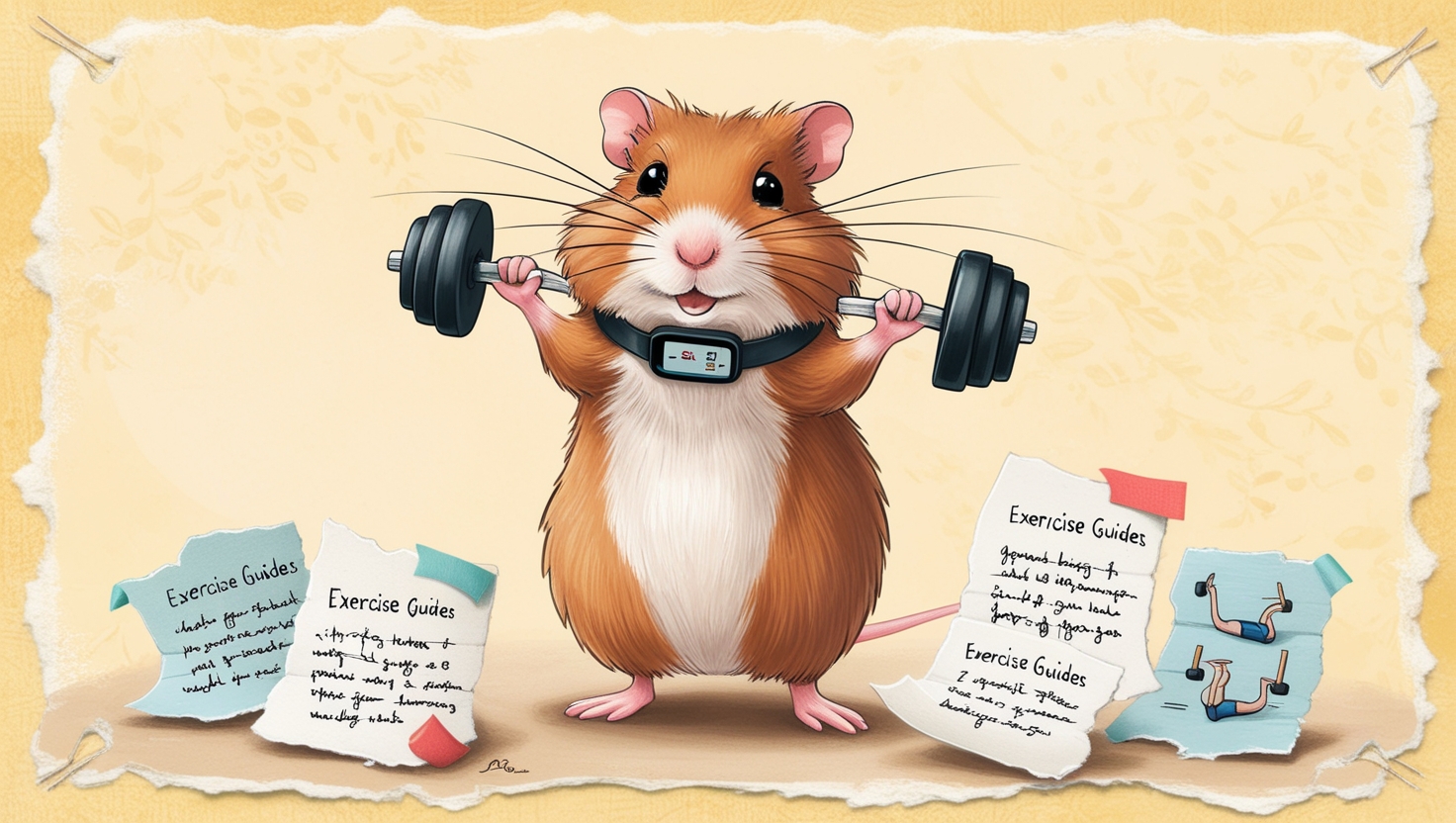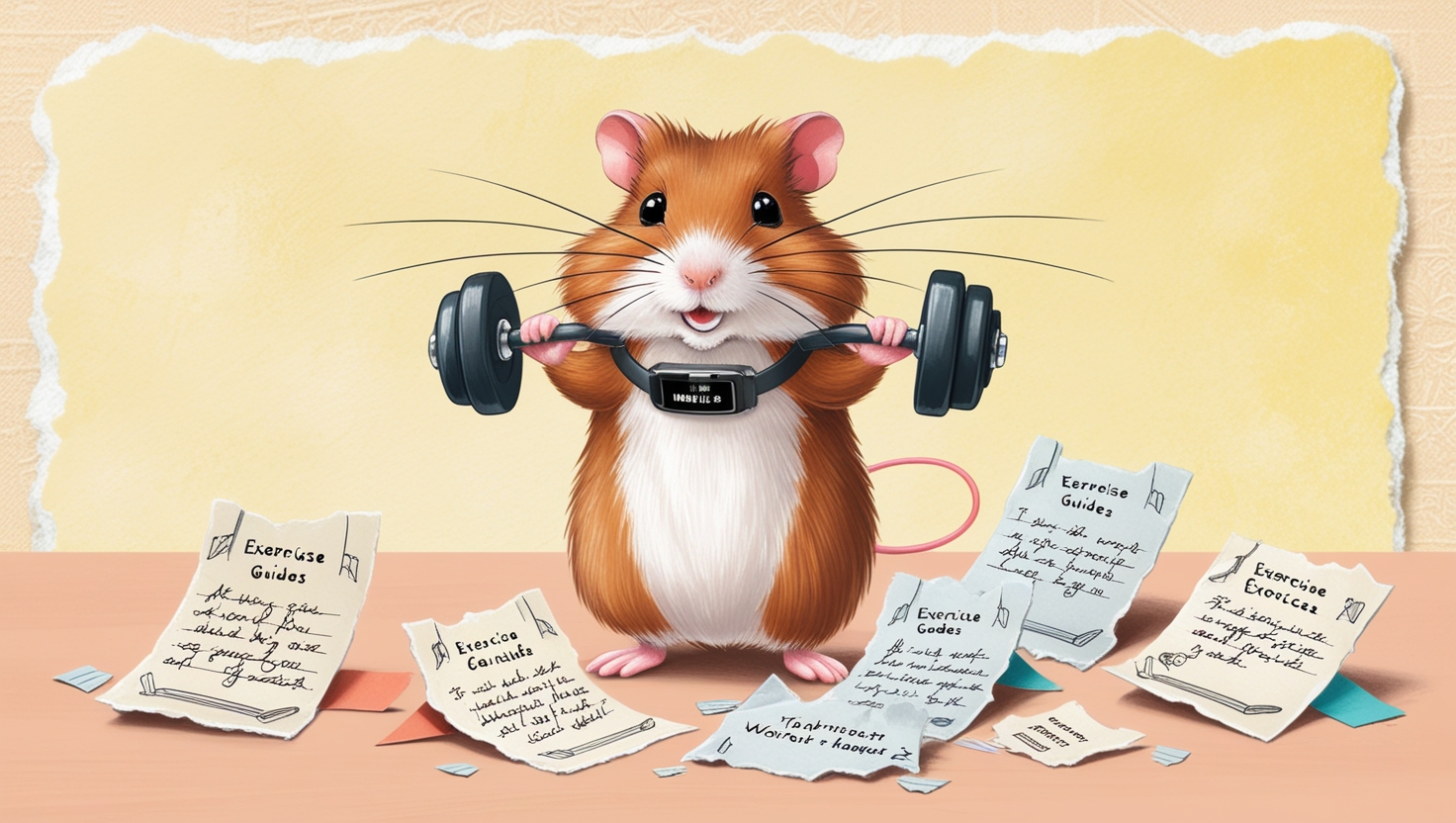Hamster Exercise Guides : How to take care of hamsters

6. It’s all about the exercise

Don’t let your hamster get fat! It’s very bad for their health.
Once your hamster is accustomed to their new home, and you have begun to bond with them, you need to make sure that the tiny rodent is getting enough exercise. If you have bought the right size cage, so there is plenty of floor space for your hamster to run around, then this will keep your pet somewhat occupied; as will the wheel in the cage which is always a favourite.
In addition you should try to make sure that your hamster gets some time outside of the cage in a hamster ball.

Choosing the right hamster wheel
With a wheel, your hamster can run surprisingly long distances without ever having to leave home. In fact, hamsters running in wheels have been known to run more than 5 miles in a single night!
All this running is great exercise for your hamster, which means they’re more likely to stay fit and healthy and not get too fat!
Both metal and plastic hamster wheels are available and each type has its own pros and cons.
- Choosing a type of hamster
- Buying your hamster
- Your hamster’s home
- Feeding your hamster
- Getting to know your hamster
- Exercise
- Cleaning
- Health problems

Metal wheels are likely to last longer than plastic wheels. However, metal wheels are usually made with rungs rather than as one solid piece (like a ladder and like the wheel pictured in the cartoon above). Unfortunately, hamster legs are quite fragile and can easily get injured if they fall through the gaps between rungs while running.
Plastic wheels are often made from one solid piece of plastic – rather than rungs – which is safer for the hamster, as there are no gaps for their legs to fall through.
Hamsters generally prefer larger wheels. The larger a wheel is, the less the hamster has to arch its back and the more similar it is to running on flat ground in the wild.
Running with an arched back is very bad for a hamster’s health. If you ever see your hamster arching their back while running then you should buy a larger wheel for them as soon as possible.
We recommend a wheel size of 12 inches for Syrian hamsters and 8 inches for dwarf hamsters.
Find out more about hamster wheels.

It’s time for the hamster ball
If you decided to purchase a hamster ball when you bought your new pet, then now is the time to try it out (well, for your hamster to try it out… you probably won’t fit!)
Always make sure the hamster is on, or close to, the ground when you first try and put them into the ball. If they don’t want to go into the ball then don’t force them, and never try to put them into the ball if they are not fully awake.
You’ll be able to tell straight away if your pet is enjoying the hamster ball experience as they will take off running and having fun. If they sit very still, or they look agitated or scared, then put them straight back into the cage. Even if they are enjoying themselves, you should not leave your hamster in the ball for any longer than 20 minutes, and you should not put them into the ball more than once per day.
It’s important to remember that you should only let a hamster run in a ball on a carpeted floor; on a wooden or tile floor the ball will move too fast and your hamster could be injured. You should also make sure there are no obstacles in the room, and definitely no other pets.
Hamster balls are an ideal exercise toy as long as your hamster is happy to be inside and you make sure that you watch them all the time they are in the ball.
Find out more about hamster exercise balls.
What else can keep a hamster occupied?
A hamster will be quite occupied by the toys in their cage, such as chewing blocks. It’s a good idea to change around the toys each week so that your hamster doesn’t get bored. This also comes in useful for you as you can clean the toys that aren’t being used that week and then swap them around.
One thing to remember is that you should never cover your hamster’s cage with toys. Remember, they need space to run around, and a place to chill.
- Choosing a type of hamster
- Buying your hamster
- Your hamster’s home
- Feeding your hamster
- Getting to know your hamster
- Exercise
- Cleaning
- Health problems
Hamster Exercise: FAQs
Hamsters are active little creatures that need plenty of exercise to stay healthy and happy. Here are some frequently asked questions about keeping your hamster active:
How much exercise does my hamster need?
While it varies by species, age, and individual personality, most hamsters need several hours of activity each day. Aim for at least an hour or two of dedicated playtime outside their cage, plus opportunities for enrichment and movement within their habitat.
What are the best ways to exercise my hamster?
Here are some great options:
Exercise Wheel: A must-have! Ensure it’s large enough (at least 5.5 inches for dwarf hamsters, 8 inches for Syrians) with a solid running surface.
Playpen Time: Set up a safe, enclosed area with toys, tunnels, and hideouts for your hamster to explore.
Hamster Ball: Supervise closely and limit time to 15-20 minutes on smooth, safe surfaces.
Obstacle Courses: Create fun challenges using cardboard boxes, tubes, ramps, and other hamster-safe materials.
What type of exercise wheel is best?
Choose a wheel with:
Solid Surface: Wire or mesh wheels can cause injuries to feet and legs.
Appropriate Size: The hamster should be able to run with a straight back.
Secure Attachment: Prevent the wheel from tipping or falling.
Can I take my hamster outside for exercise?
It’s best to avoid taking your hamster outside. Risks include:
Escape: Hamsters are quick and can easily disappear.
Predators: Cats, dogs, and birds of prey pose a danger.
Parasites and Diseases: Outdoor environments can expose hamsters to harmful organisms.
Temperature Fluctuations: Hamsters are sensitive to extreme heat and cold.
How can I tell if my hamster is getting enough exercise?
A well-exercised hamster will be:
Active and playful
Maintaining a healthy weight
Free from stress behaviors (e.g., bar chewing, excessive grooming, aggression)
What are some signs my hamster isn’t getting enough exercise?
Watch for:
Lethargy
Weight gain
Bar chewing
Aggression
Stereotypical behaviors (repetitive, purposeless movements)
Can I exercise my hamster too much?
While rare, it’s possible to overdo it. Avoid forcing your hamster to exercise if they seem tired or stressed. Let them guide the playtime and provide opportunities for rest.
Remember: Always supervise your hamster during exercise and provide a safe and stimulating environment. By offering plenty of outlets for their natural energy, you can help your hamster live a long, healthy, and fulfilling life!
